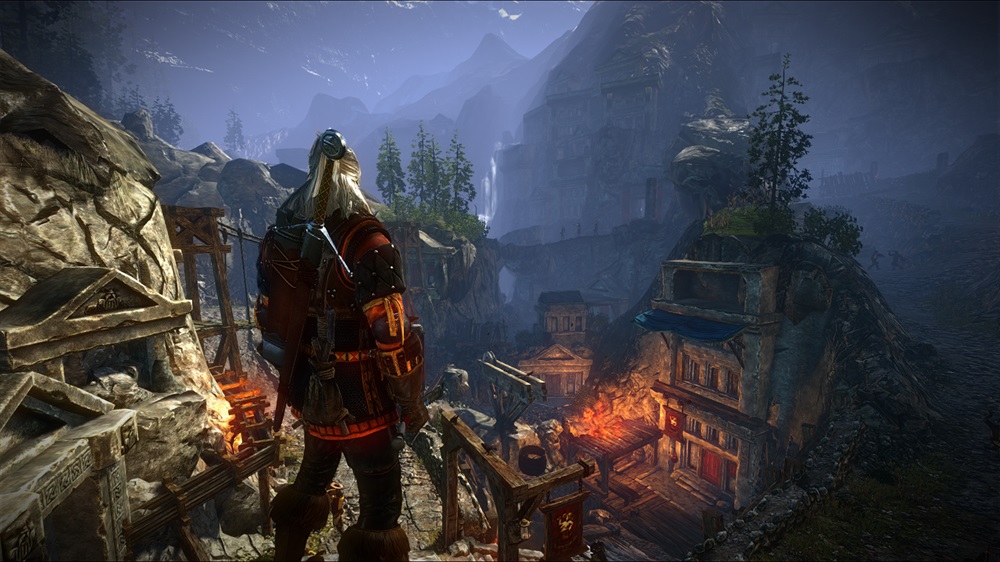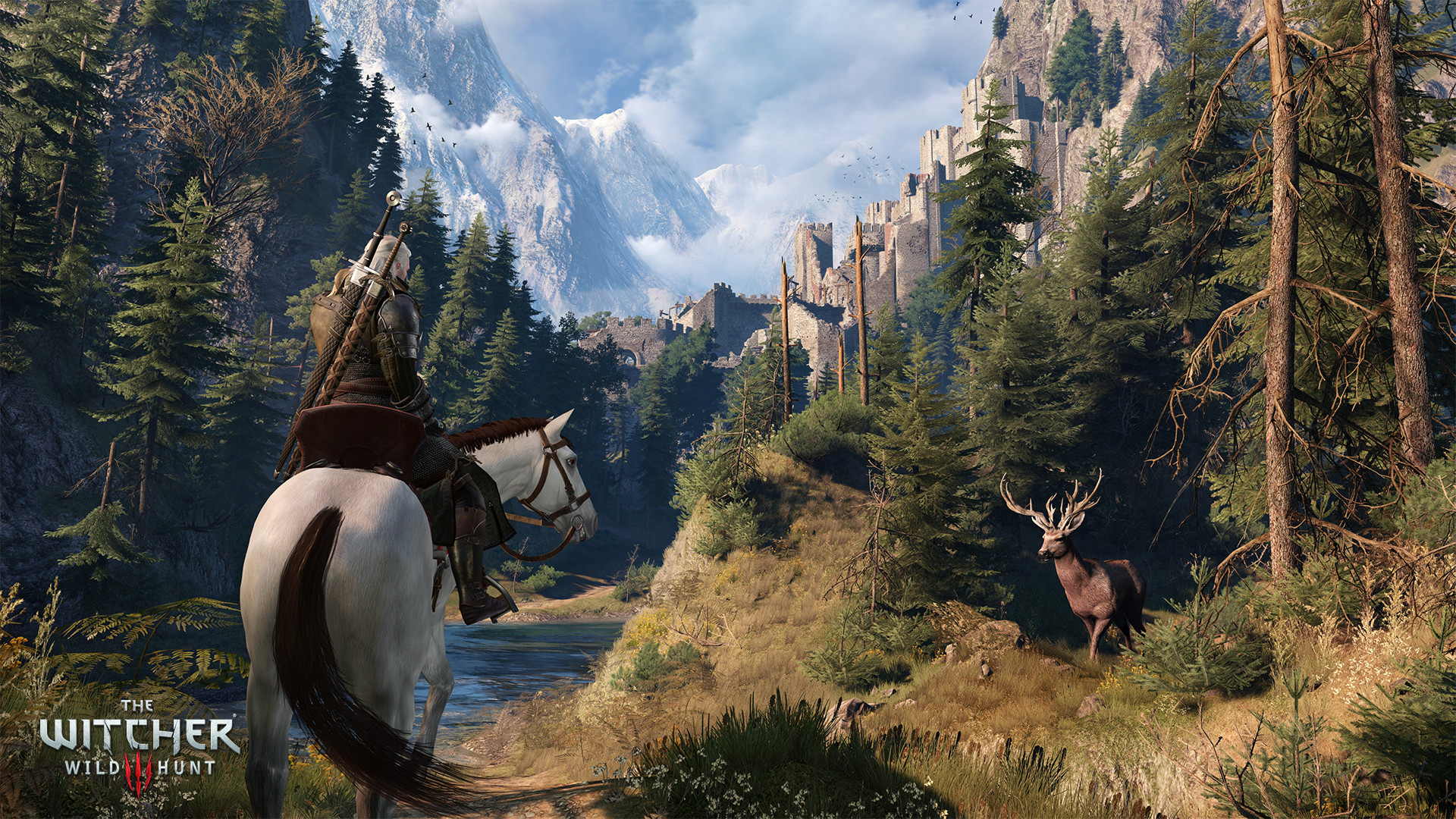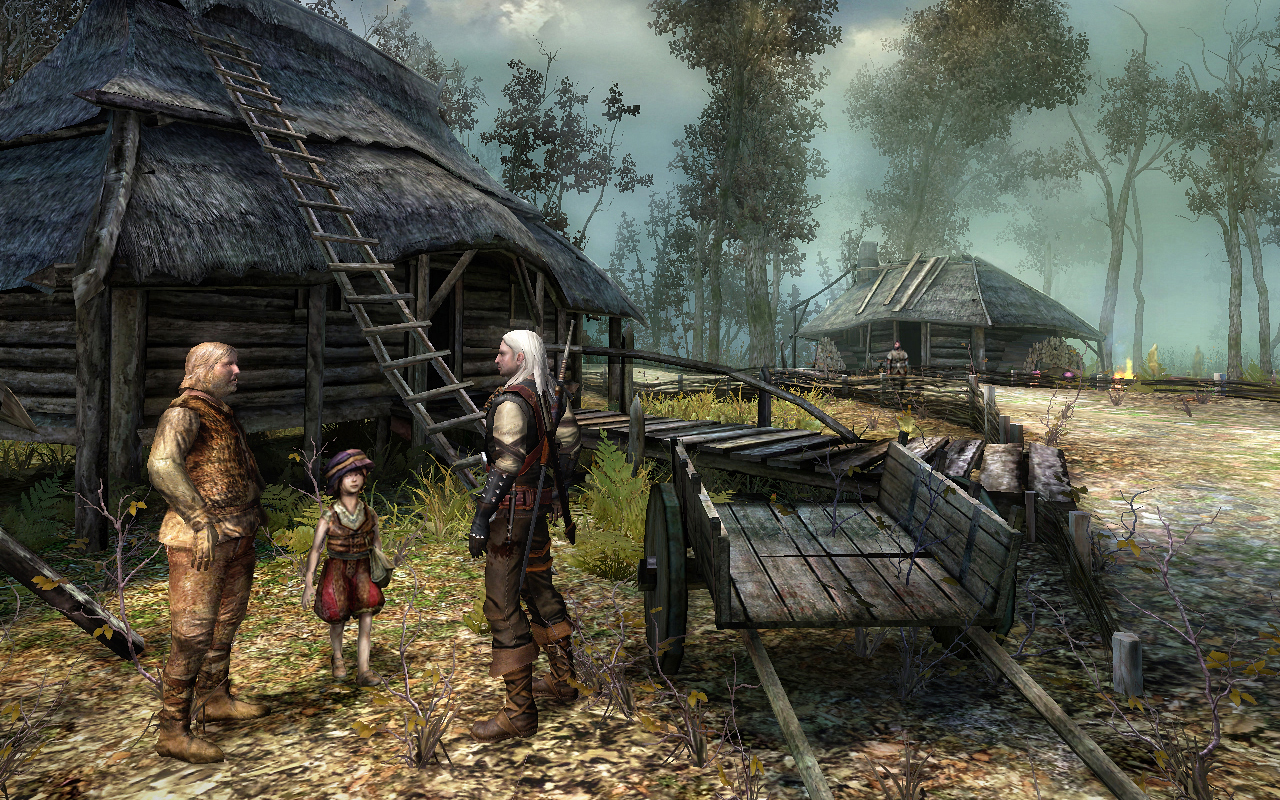The Witcher Remake will be open-world, which is good — and bad
The Witcher Remake’s open-world design could make the game more accessible, but less distinctive

The Witcher Remake is underway, and while we won’t see it for a while, it’s definitely something to look forward to. Celebrated developer CD Projekt Red is remaking the original Witcher game from the ground up, and earlier this week, we learned something pretty interesting about the game: it will be open-world. Just like The Witcher 3: Wild Hunt, The Witcher Remake will let Geralt of Rivia freely traverse cities, towns, farms and wilderness areas seamlessly.
Considering how much fans loved this design in The Witcher 3, the decision is sure to please a lot of gamers. However, there is a danger in giving fans exactly what they think they want — particularly when we might lose something that made The Witcher (2007) special along the way.
We know almost nothing about The Witcher Remake, so it’s impossible to say whether an open-world structure will be to the game’s benefit or detriment. However, we can at least say that the open-world Witcher 3 had a distinctly different vibe from the first two Witcher games, whose more constrained nature sometimes worked to their benefit. It’s easy to see how an open-world Witcher Remake could add some more depth to the venerable old game, but just as easy to see how it could go wrong.
The Witcher Remake: Open-world pros
First off, it’s easy to see why CD Projekt Red would want to take an open-world approach with The Witcher Remake. The Witcher was a cult hit, and The Witcher 2: Assassins of Kings brought the series into the mainstream.
To many recent fans, “The Witcher” and “open-world” are synonymous, so it makes sense to continue that trend rather than walk it back.
But it wasn’t until The Witcher 3 that the franchise became a cultural institution. Something about the open-world format was simply more accessible than the semi-linear approach that the first two games used. To many recent fans, “The Witcher” and “open-world” are synonymous, so it makes sense to continue that trend rather than walk it back.
Furthermore, open-world games have been in vogue for the past 15 years, and they’re not likely to go away anytime soon. Open-world games seem to have an inherent appeal for a large contingent of gamers. You can explore at your own pace; you can undertake lots of side activities to build up your experience and gear; you can even choose the order in which you tackle certain plot points. Beyond that, there’s a simple lizard-brain kind of satisfaction in checking items off a big list, whether it’s whittling down a side quest journal or exploring question marks on a map.

Open-world games have the potential to get repetitive and uninspired, but The Witcher 3 generally filled its map with worthwhile things to do. If The Witcher Remake follows suit, then it should be a pleasure to explore Temeria again.
Get instant access to breaking news, the hottest reviews, great deals and helpful tips.
An open-world design would also improve on a few shortcomings from the original Witcher game. The Witcher (2007) was divided into five different chapters, plus a prologue and an epilogue. Generally speaking, once a chapter ended, you couldn’t go back to the previous chapter’s areas. This meant that if you left any quests undone, areas unexplored or gear undiscovered, they were gone for good. This wasn’t game-breaking, since each new area had plenty to do. But The Witcher was a rich game, with intriguing side stories to complete and worthwhile items to collect. Getting locked out of them wasn’t fun, especially if you learned too late that completing a side quest could have had positive repercussions later on in the game.
CD Projekt Red is taking a risk with The Witcher Remake’s open-world design. The Witcher 3 worked as an open-world game; The Witcher (2007) worked as a more directed, linear RPG. ... but they’re not the same game.
Similarly, an open-world design could address The Witcher’s relatively limited selection of weapons and armor. Most chapters had one new armor set and one new sword to collect — that was it. If you missed them, they were gone for good, and you’d have to hope there was something better in the next chapter. This wasn’t always the case, especially since some quests offered multiple swords as a reward, and it was entirely possible to claim the same thing twice. Since open-world games generally inundate the player with new weapons and armor, players could count on frequent upgrades, even if they miss one particular item.
The Witcher Remake: Open-world cons
On the other hand, CD Projekt Red is taking a risk with The Witcher Remake’s open-world design. The Witcher 3 worked as an open-world game; The Witcher (2007) worked as a more directed, linear RPG. The two titles share characters, storylines, lore and general gameplay conventions, but they’re not the same game. If you’re willing to put a little legwork in, The Witcher is a great game, and part of its charm comes from its pacing.
As discussed above, The Witcher has seven chapters, and most of the areas are mutually exclusive. Even when you revisit an old area in a new chapter, it’s usually undergone some kind of significant change. This “one-and-done” approach added two important aspects to The Witcher: a steady cadence to its story, and a sense of scale.

Open-world games generally don’t have great pacing. That’s probably not a terribly controversial point, but it bears mentioning. In an open-world game, you’ll usually get a plot mission, with a ton of explorable space between you and your objective. No matter how urgent your next quest seems, you could conceivably spend hours completing side quests, gathering resources and filling in the map first. Conversely, if you’re the kind of player who wants to plumb every nook and cranny of the map before you advance the plot, you could find yourself doing a plethora of plot missions in rapid succession, which can become exhausting.
The original Witcher, with its “one area at a time, with a handful of side quests” approach ensured that players were never too far away from the next plot objective — and that not too much would distract them before they reached it. This gave the story a sense of forward momentum that open-world games often struggle to maintain.
In an open-world game, each area might look different, but the feel is the same: scope out an optional objective, complete it, and move onto the next one until you’re ready to advance the plot again.
As for the sense of scale, as much as I didn’t like The Witcher’s inability to revisit past areas, I do have to admit that it’s an effective storytelling and structural tool.
From a story perspective, leaving areas behind for good makes the world feel big, and reinforces the idea that traversing it is difficult. While instantaneous fast-travel is a necessity in open-world games, the original Witcher gave the sense that Geralt had to expend a lot of time and effort to reach each new area, and that going back wasn’t an option. That served to raise the stakes, and make the setting feel more immersive.
Structurally speaking, this also helped each chapter in The Witcher feel distinct. Exploring the outskirts of a town in Chapter 1 felt radically different from exploring a big city in Chapter 2, which felt radically different from exploring the remote lake country in Chapter 4. In an open-world game, each area might look different, but the feel is the same: scope out an optional objective, complete it, and move onto the next one until you’re ready to advance the plot again.
The Witcher Remake outlook

An open-world structure is a game design decision, and like most game design decisions, it’s not inherently good or bad. The Witcher 3 was a great open-world game; The Witcher was a great linear RPG. By combining The Witcher’s story with The Witcher 3’s structure, we could get the best of both worlds, or we could get something that doesn’t reflect well on either game. It’s simply too early to tell.
In any case, The Witcher may seem dated today, but the game still has many charms, from its excellent story to its unconventional combat system. I hope that CD Projekt Red uses an open-world structure to enhance what fans loved about the first game, rather than trying to overwrite it. After all, if the company wants to remake The Witcher 3, all it has to do is wait a few more years.

Marshall Honorof was a senior editor for Tom's Guide, overseeing the site's coverage of gaming hardware and software. He comes from a science writing background, having studied paleomammalogy, biological anthropology, and the history of science and technology. After hours, you can find him practicing taekwondo or doing deep dives on classic sci-fi.
